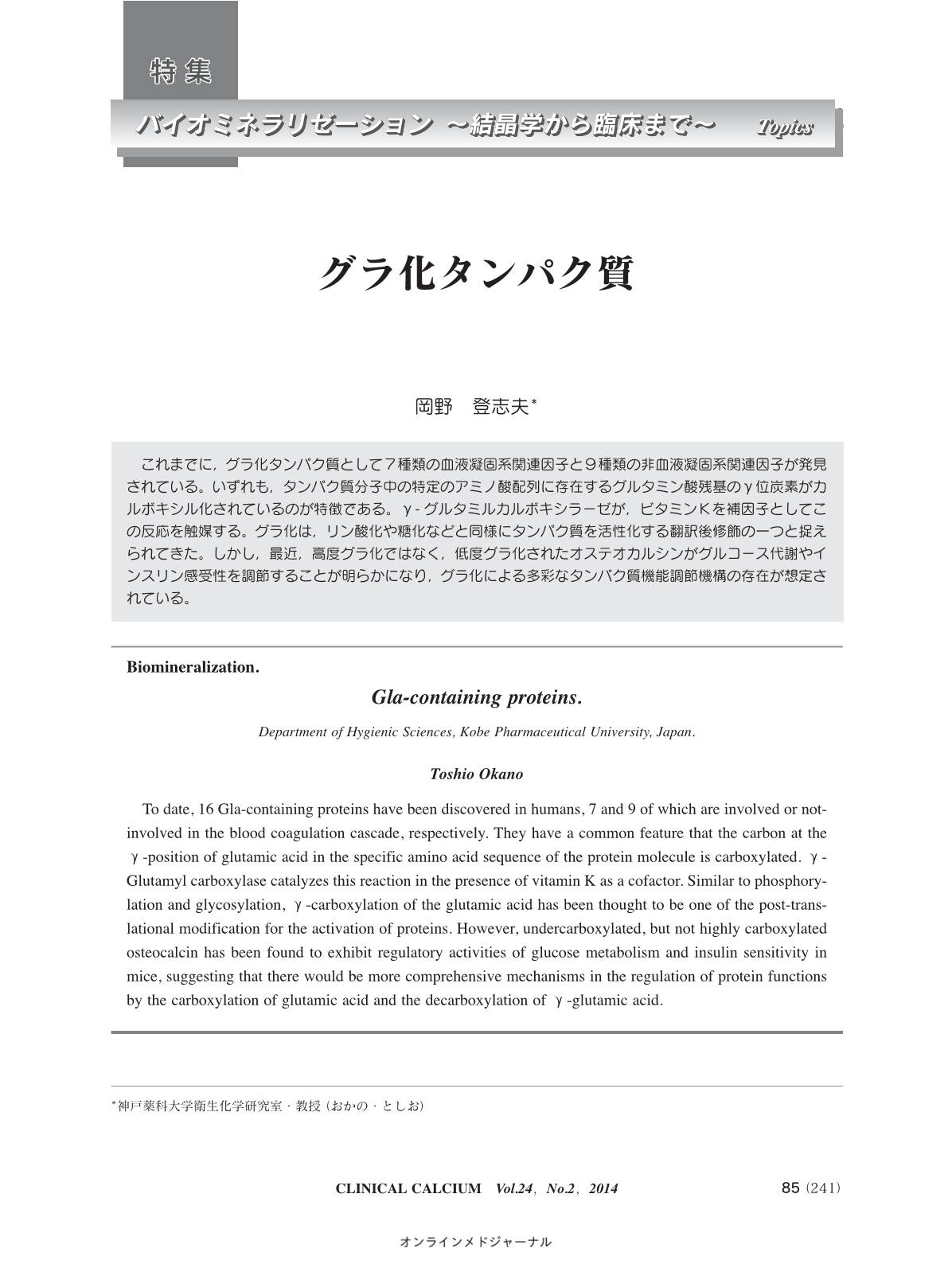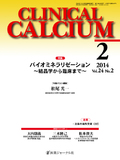- 有料閲覧
- 文献概要
- 1ページ目
- 参考文献
これまでに,グラ化タンパク質として7種類の血液凝固系関連因子と9種類の非血液凝固系関連因子が発見されている。いずれも,タンパク質分子中の特定のアミノ酸配列に存在するグルタミン酸残基のγ位炭素がカルボキシル化されているのが特徴である。γ-グルタミルカルボキシラーゼが,ビタミンKを補因子としてこの反応を触媒する。グラ化は,リン酸化や糖化などと同様にタンパク質を活性化する翻訳後修飾の一つと捉えられてきた。しかし,最近,高度グラ化ではなく,低度グラ化されたオステオカルシンがグルコース代謝やインスリン感受性を調節することが明らかになり,グラ化による多彩なタンパク質機能調節機構の存在が想定されている。
To date, 16 Gla-containing proteins have been discovered in humans, 7 and 9 of which are involved or not-involved in the blood coagulation cascade, respectively. They have a common feature that the carbon at the γ-position of glutamic acid in the specific amino acid sequence of the protein molecule is carboxylated. γ-Glutamyl carboxylase catalyzes this reaction in the presence of vitamin K as a cofactor. Similar to phosphorylation and glycosylation, γ-carboxylation of the glutamic acid has been thought to be one of the post-translational modification for the activation of proteins. However, undercarboxylated, but not highly carboxylated osteocalcin has been found to exhibit regulatory activities of glucose metabolism and insulin sensitivity in mice, suggesting that there would be more comprehensive mechanisms in the regulation of protein functions by the carboxylation of glutamic acid and the decarboxylation of γ-glutamic acid.



